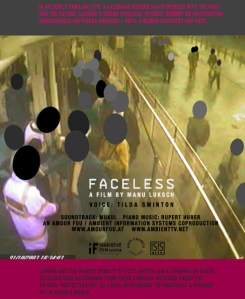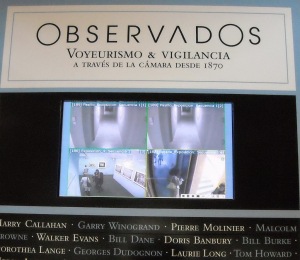301 Moved Permanently to covertsurveillanceart.artprop.org.uk
301 Moved Permanently to covertsurveillanceart.artprop.org.uk Leave a comment
Surveillance Camera Man Points Camera at Strangers Without Permission 1 comment
petapixel has article (and more video) about Surveillance Camera Man Points Camera at Strangers Without Permission
Mapping CCTV around Whitehall Leave a comment
A review in furtherfield.org of a work by Manu Luksch.
“Mapping CCTV around Whitehall”, 2008, is, as its name implies, a performance of mapping Closed Circuit Television (CCTV) security cameras around the UK’s parliament in London and a video record of that performance by Ambient.tv’s Manu Luksch.
Starting with a HAL 9000-like image of a CCTV lens, the video of “Mapping CCTV In Whitehall” has a glitchy techno aesthetic of sound and images with a post-MTV-Style Guide reportage feel. The first half consists of a recording of the police stop-and-search interviewing Luksch under anti-terrorism legislation, with a map of the area superimposed.
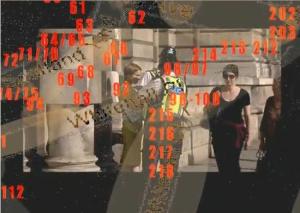
The area of London that Luksch has mapped is the SOCPA exclusion zone. A map of CCTV cameras is clearly useful to terrorists, and a map of the CCTV cameras near Parliament is clearly an act of dissent against the political consensus that constitutes domestic extremism. The police who interview Luksch touch on these ideas.
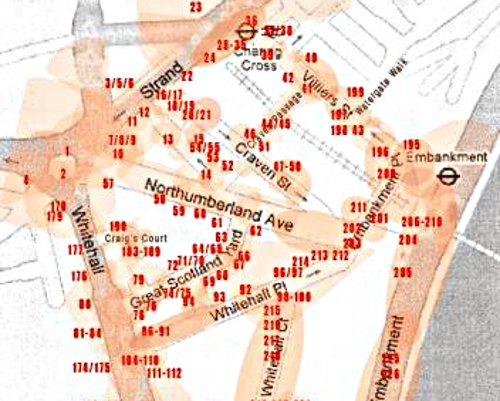
CCTV recordings are subject to the Data Protection Act, and from 2002-2008 Manu Luksch used personal data requests under the act to obtain the CCTV recordings of her going about her business that she used to make the film “Faceless“. The videos usually had other people’s faces blotted out to protect their privacy, which gave the resulting film its science fiction plot of people starting to lose their faces. But as Luksch was making “Faceless“, the responses to her personal data requests became rarer as the authorities adjusted the balance of power back in favour of themselves.
OBSERVADOS. VOYEURISMO Y VIGILANCIA A TRAVÉS DE LA CÁMARA DESDE 1870 Leave a comment
Del 27 de octubre de 2011 al 8 de enero de 2012
Exposición organizada por el San Francisco Museum of Modern Art y la Tate Modern. Patrocinada por Trellis Fund y la Phyllis C. Wattis Foundation.
An exhibition in the Fundación Canal in Madrid, roughly the same as the Exposed: Voyeurism, Surveillance and the Camera exhibition at Tate Modern.
Desde el punto de vista fotográfico el documento es mucho más importante que la calidad, el encuadre o la nitidez. Los valores de la imagen caen en favor de “un robo” que demuestre la vulnerabilidad del personaje. Para conseguir estos “robados”, la mayoría de los fotógrafos se han servido de sobornos, escondites o enormes teleobjetivos.
As you walk in, the first thing seen is a block of four surveillance camera images of the interior of the exhibition.
I took some covert photographs. This is the chair where one of the security guards was sitting.
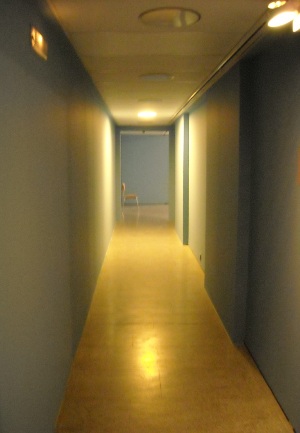
This is a photograph, taken surreptitiously, of a photograph, itself taken surreptitiously, of Queen Elizabeth II with her corgi dogs and a liveried dog walker.
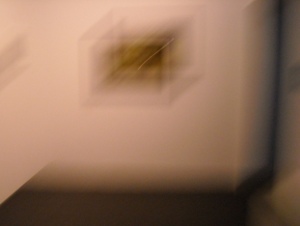
And finally, a rather blurred snap of a security guard advancing on me saying “it is forbidden to take photographs”.
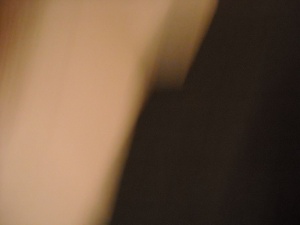
TOTAL ENLIGHTENMENT Leave a comment
Conceptual Art in Moscow 1960-1990
An Exhibition with more than 200 works by 25 artists, from 1960 to 1990, which reconstructs the “unofficial” art scene of the period in question in the Soviet Union. Fundación Juan March, Madrid. October 10, 2008 – January 11, 2009.
Imagine a place where the dream of a modern utopia actually existed. A place with no distinctions between high and mass culture. Imagine contemporary artists working in a world in which, officially, there was neither an art market nor galleries, neither critics nor collectors, neither art publications nor any institutions other than those of the State. A world without an audience.
For most of the 20th century, such was the reality in the Soviet Union from 1922 until its dissolution in 1991. And it was within this context that the conceptual artists of Moscow, from the 1960s through the 1990s, created their distinctive body of work, operating along the margins of a culture and society defined by those very absences. Total Enlightenment: Conceptual Art in Moscow, 1960-1990, conceived and co-organized by the Fundación Juan March and the Schirn Kunsthalle Frankfurt – where the exhibition is on view from June 21 to September 14, 2008 – with organizing curator Boris Groys – the leading expert on this subject – is the first systematic presentation of the work of these artists.
Featured are some 150 works in all media by 25 artists, including such pivotal representatives as Ilya Kabakov, Erik Bulatov, Boris Mikhailov, Dmitri Prigov, Komar & Melamid, Yuri Albert, Andrei Monastyrski and the artist groups Collective Actions and Inspection Medical Hermeneutics. Through these works, and a provocative installation, the exhibition reconstructs the “unofficial” art scene of the period in question and documents the acute reflections of these artists on the all-embracing Soviet ideology. Their varied works provide insight and commentary on an artistic-political program whose subject was the world in its totality; its time span, all of history, and its result, the Soviet system.
This exhibition was notable for the quantity of security guards who were very attentive at stopping any attempt to take photographs inside the gallery (or anywhere in the building). I took the lift between the two floors of the gallery and took the photograph of the lift panel display (shown above). On arriving at the next floor, I was met by two security people, one armed with a gun, who insisted very seriously that it was forbidden to take photographs. They must have been observing the Closed-Circuit-TV of the interior of the lift. One wonders whether the March Foundation is always like this, or whether the highlighted text in the quote gives a clue.
Saatchi Gallery Leave a comment
The security guard looks up. Must have been alerted by someone watching CCTV that she was being filmed.
Freedom to photograph in public Leave a comment
Extracts from notes on freedom to photograph people, buildings and things that are in public. See the reference for more detail.
United Kingdom
Section 62 of the UK Copyright, Designs and Patents Act 1988 is much broader than the corresponding provisions in many other countries, and allows photographers to take pictures of
* buildings, and
* sculptures, models for buildings and works of artistic craftsmanship (if permanently situated in a public place or in premises open to the public).without breaching copyright. Such photographs may be published in any way.
Note that under UK law, works of artistic craftsmanship fall into a different copyright category from graphic works such as paintings, photographs, drawings and the like. The freedom provided by Section 62 does not apply to graphic works (which will typically be two-dimensional) such as paintings, murals, advertising hoardings, maps, posters or signs.
The practical effect of the broad Freedom of Panorama provisions in the UK and in other countries with similar laws is that it is acceptable to upload not only photographs of public buildings and sculptures but also works of artistic craftsmanship which are on permanent public display in museums, galleries and exhibitions which are open to the public. According to Copinger and Skoane James, “The expression “open to the public” presumably extends the section to premises to which the public are admitted only on licence or on payment”. Again, this is broader than ‘public place’ which is the wording in many countries.
Interrupted video Leave a comment
The attendant at the Tate stopped me from completing this video. Especially ironic as Tate Modern is showing an exhbition called Exposed: Voyeurism, Surveillance and the Camera. Where are they going to get covert images from for the next show?
Exposed: Voyeurism, Surveillance and the Camera 2 comments
exhibition at Tate Modern 28 May – 3 October 2010
http://www.tate.org.uk/modern/exhibitions/exposure/default.shtm
…Exposed offers a fascinating look at pictures made on the sly, without the explicit permission of the people depicted. With photographs from the late nineteenth century to present day, the pictures present a shocking, illuminating and witty perspective on iconic and taboo subjects…
…Much of Exposed focuses on surveillance, including works by both amateur and press photographers, and images produced using automatic technology such as CCTV. The issues raised are particularly relevant in the current climate, with topical debates raging around the rights and desires of individuals, terrorism and the increasing availability and use of surveillance. Exposed confronts these issues and their implications head-on….
Reina Sofia film Leave a comment
X-raying bags at the Reina Sofia art gallery in Madrid.
